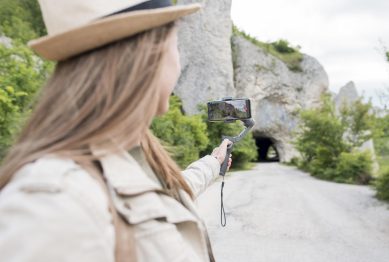Travel in 2025 is no longer just about sightseeing or ticking off destinations on a checklist. More travelers are seeking meaningful experiences that connect them with the heart of a place—its people, traditions, and culture. Travel planning for cultural immersion has become a growing trend, shifting the way individuals approach their journeys. Rather than focusing solely on popular attractions, modern travelers are prioritizing authentic engagement, sustainability, and local storytelling.
This article explores the emerging trends shaping cultural immersion travel in 2025 and provides practical strategies for planning trips that go beyond the surface.

Why Cultural Immersion Matters in 2025
In recent years, travel has undergone a transformation. Post-pandemic, many people began reevaluating the purpose of their trips. Instead of chasing postcard-perfect views, travelers are searching for opportunities to build genuine human connections. Cultural immersion provides exactly that: it allows visitors to step into local life, participate in traditions, and experience daily rhythms in a way that broadens perspectives.
This trend is also being driven by technology. With social media and digital platforms offering constant glimpses into global cultures, travelers are more curious than ever to experience those moments in real life. As a result, cultural immersion has shifted from being a niche style of travel to a mainstream priority.
Key Trends in Travel Planning for Cultural Immersion
1. Longer Stays in Fewer Destinations
Travelers are moving away from fast-paced itineraries that cover multiple countries in a short span. Instead, many are choosing slow travel, spending weeks or even months in one location. This allows them to immerse themselves in the community, learn the language basics, and establish real relationships with locals. Longer stays often include volunteering opportunities or workshops focused on traditional practices.
2. Growing Interest in Culinary Experiences
Food has always been central to cultural understanding, but in 2025, travelers are going beyond restaurant dining. Cooking classes in local homes, visits to traditional markets, and farm-to-table experiences are gaining popularity. Food tours are increasingly guided by locals who explain the history behind each dish, turning meals into cultural storytelling moments.
3. Community-Led Tourism
One of the strongest shifts in cultural immersion travel is the emphasis on community-led tourism. Locals are no longer just service providers but active curators of experiences. Travelers are booking stays with families, participating in community projects, and learning from artisans directly. This not only ensures authenticity but also directs financial benefits back into the community.
4. Language as a Gateway
Language learning is becoming an integral part of cultural immersion travel. Apps and online courses help travelers prepare before departure, while in-destination programs encourage participation in conversational exchanges. Even learning simple greetings or phrases creates opportunities for deeper cultural connection and shows respect to the host community.
5. Sustainability and Responsible Choices
Cultural immersion in 2025 is closely linked to sustainability. Travelers want to ensure that their presence supports, rather than disrupts, local traditions. Choosing eco-friendly accommodations, supporting local artisans instead of mass-market souvenirs, and prioritizing low-impact activities are becoming standard practices for conscious travelers.
6. Technology as a Bridge, Not a Barrier
While cultural immersion focuses on human connection, technology still plays a role. Virtual reality previews of local customs, AI-powered translation apps, and digital platforms connecting travelers with hosts are making cultural immersion more accessible. Technology is being used to break down barriers rather than replace authentic experiences.
Practical Tips for Planning Cultural Immersion Travel
If you’re looking to create a travel plan focused on cultural immersion, here are some practical strategies:
- Choose locally owned accommodations
Opt for family-run guesthouses, homestays, or small boutique hotels rather than international chains. These options often include cultural experiences as part of the stay. - Participate in community workshops
Seek out classes in cooking, pottery, weaving, or dance offered by local artisans. These activities provide hands-on ways to learn traditions directly from practitioners. - Plan around festivals and local events
Cultural festivals offer immersive opportunities to experience traditions, music, and food in an authentic setting. Research local calendars when choosing travel dates. - Use local transportation
Instead of renting a private car, try buses, trains, or bike-sharing programs. This not only reduces environmental impact but also places you in the middle of everyday local life. - Eat where locals eat
Skip tourist-heavy restaurants and explore neighborhood markets, street food stalls, and family-run eateries. Asking locals for recommendations is often the best way to discover authentic flavors. - Practice mindful photography
While capturing memories is important, always ask permission before taking photos, especially in cultural or spiritual settings. Respect ensures trust and prevents cultural exploitation. - Learn key cultural etiquette
Research local customs such as greeting rituals, dress codes, and dining etiquette before arriving. Small gestures of cultural respect create positive interactions.
Emerging Destinations for Cultural Immersion in 2025
Certain regions are becoming particularly attractive for cultural immersion travel this year:
- Southeast Asia: Countries like Vietnam and Laos are gaining recognition for their community-based tourism projects and authentic homestay programs.
- Eastern Europe: Rural areas in countries like Romania and Georgia offer opportunities to learn traditional crafts and participate in seasonal farming practices.
- South America: Peru and Colombia are expanding initiatives that combine indigenous heritage with eco-tourism, allowing travelers to engage with cultural rituals in a responsible way.
- Africa: Countries such as Kenya and Ghana are investing in cultural heritage programs where storytelling, music, and dance are central to visitor experiences.
The Challenges of Cultural Immersion Travel
While cultural immersion offers countless benefits, it comes with challenges that travelers need to be mindful of:
- Avoiding superficial experiences: Some experiences marketed as cultural can be staged for tourists rather than authentic. Careful research helps avoid this.
- Balancing respect and curiosity: Asking questions is valuable, but respecting boundaries is equally important. Not all traditions are open for participation.
- Managing over-tourism: Popular destinations face the risk of losing authenticity if they become overwhelmed by visitors. Supporting lesser-known areas helps spread tourism benefits.
The Future of Travel Planning for Cultural Immersion
As we look ahead, travel planning for cultural immersion will likely continue to expand. Governments and tourism boards are investing in cultural heritage preservation, while tech companies are creating platforms that connect travelers with locals more directly. The global interest in sustainable, mindful travel shows no signs of slowing down.
By 2030, cultural immersion may become the norm rather than the exception in travel planning. For now, in 2025, it represents one of the most exciting ways to approach global exploration, offering experiences that are both meaningful and memorable.
Conclusion
Travel planning for cultural immersion in 2025 reflects a growing desire to experience the world more deeply. Instead of simply observing, travelers are choosing to participate, engage, and connect. From community-led tourism to immersive food experiences and language learning, the possibilities for meaningful cultural encounters are expanding every year.
For those looking to enrich their travels, cultural immersion offers more than just memories—it provides a new way of seeing the world. By planning carefully and traveling responsibly, every journey becomes an opportunity to bridge cultures and build lasting human connections.
References
- 2025 Travel Trends Embrace Immersion, Sustainability, and Personalization, https://www.funplacetotravel.com
- 2025 Travel Trends Highlight Intentional, Immersive, and Eco-Friendly Experiences, https://www.thailandculturereporter.com
- Tourism Trends 2025: Future of Travel, https://www.trappetravel.com









